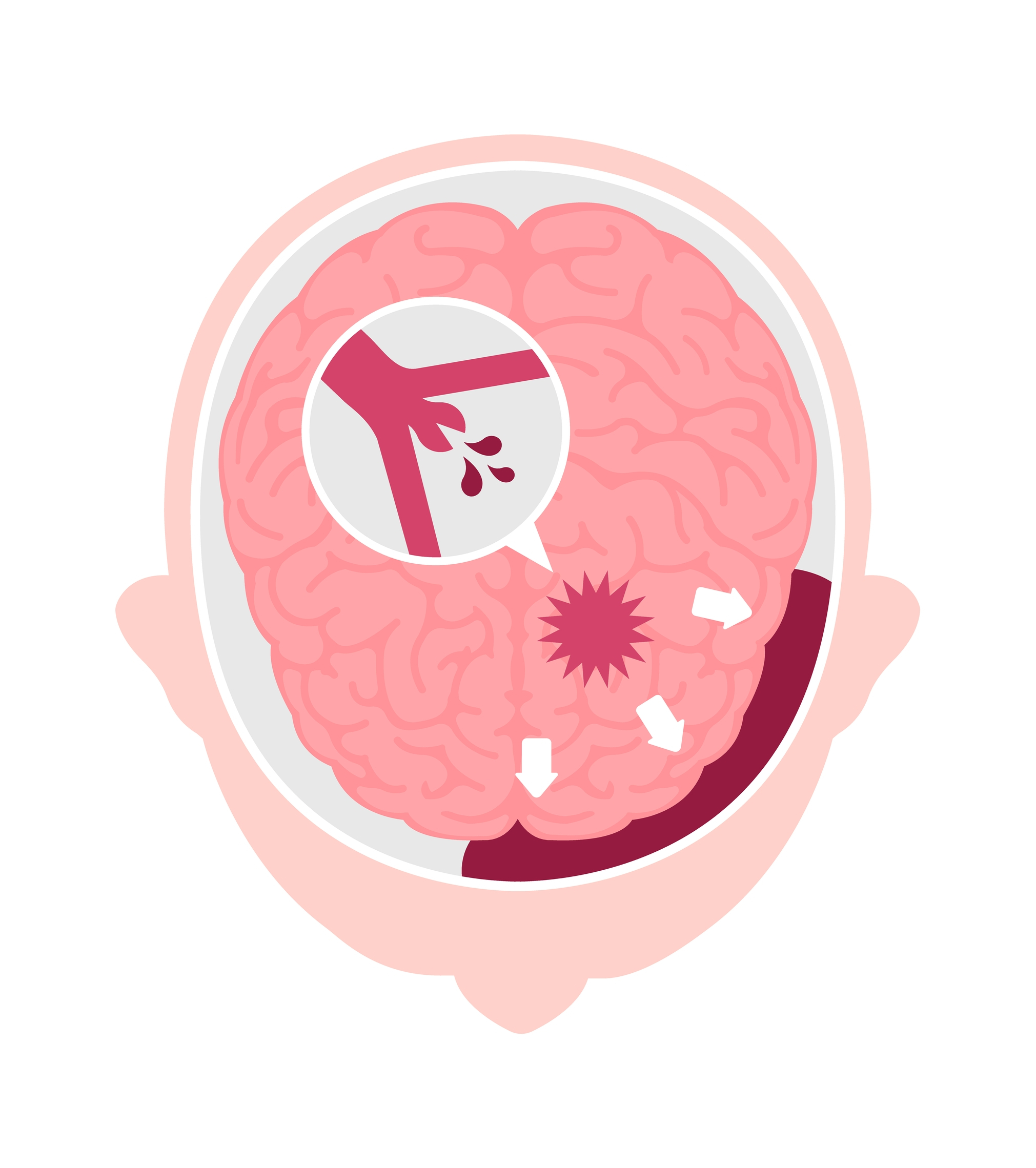Subarachnoid Hemorrhage


The subarachnoid space (SAS) refers to the space between arachnoid and the pia mater – innermost membrane that surrounds the central nervous system. The arachnoid is named for its delicate, spider-web-like filaments that extend from its undersurface.
A subarachnoid hemorrhage is bleeding in this space between your brain and the surrounding membrane. Bleeding usually results from the rupture of an abnormal bulge in a blood vessel (aneurysm) in your brain. If this goes untreated, it may result in permanent brain damage or even death.
What is subarachnoid hemorrhage?
Subarachnoid hemorrhage occurs in the subarachnoid area between the brain and the tissues that cover your brain. The cerebrospinal fluid circulates in the subarachnoid space. It helps protect your brain from injury as it serves as a cushion.
If there is hemorrhage in this space, it can lead to coma, paralysis or death. This condition does not take too long to develop. Most often, it happens because of head trauma. Immediate medical intervention is critical for survival.
What are the symptoms of subarachnoid hemorrhage?
When subarachnoid hemorrhage develops, you may experience numerous symptoms. A sudden and severe headache is the primary symptom. It is more intense at the base of the skull. Those who have experienced it describe it as the worst headache they have ever had. Similarly, you may also experience a popping sensation in your head before the hemorrhage starts. You may also experience the following symptoms:
· Numbness throughout the body
· Seizures
· Irritability
· Decreased vision
· Neck pain
· Shoulder pain
· Sensitivity to light
· Double vision
· Vomiting
· Confusion
· Nausea
· Quick loss of alertness
What are the causes of subarachnoid hemorrhage?
SAH can happen suddenly or because of head trauma. Spontaneous SAH often occurs due to brain aneurysms (abnormalities within the arteries of the brain). Berry aneurysm is the most common cause of primary SAH.
Berry aneurysm is a kind of aneurysm that weakens the arteries’ walls over time. In simpler words, when an aneurysm erupts, it bleeds quickly and results in clot formation. It is the cause of most of the SAH cases.
While it may occur at any age, the 40 to 65 age group is the most vulnerable. On the other hand, trauma to the brain during an injury can also lead to subarachnoid hemorrhage.
A severe head injury like that suffered in a car crash, or when an older adult falls and hits, his/her head can result in a SAH. Other causes include bleeding disorders, usage of blood thinners and bleeding from AVM (arteriovenous malformation).
When do you need to see a doctor?
Subarachnoid hemorrhage is a medical emergency . The sooner you can control the bleeding, the better the result will be. Seek emergency attention immediately if you experience any symptoms mentioned above.
Request an appointment at Apollo Hospitals.
Call 1860-500-1066 to book an appointment.
How can you prevent subarachnoid hemorrhage?
The only way you can prevent subarachnoid hemorrhage is by identifying the potential problems within your brain on time. If they get detected early, it is easier to prevent them. Similarly, treating brain aneurysms has helped prevent a subsequent hemorrhage in the subarachnoid space.
What are the treatment options for subarachnoid hemorrhage?
The initial treatment for subarachnoid hemorrhage is focused on stabilizing the condition of a patient. If a ruptured brain aneurysm causes the bleeding, your doctor may recommend the following treatment options:
Clip: In this surgery, your surgeon will make an incision on your scalp to locate the brain aneurysm. After that, they will place a metal clip across the aneurysm’s neck to stop the blood flow to it.
Endovascular Embolization: In this case, the surgeon will thread a catheter to your brain through an artery in the groin. The coils placed in the aneurysm through the catheter create a clot to stop the bleeding.
Other Endovascular Treatments: Some aneurysms can be treated with endovascular embolization that uses newer technology. It includes stent-assisted or balloon-assisted coiling or devices for diverting blood flow.
Sometimes endovascular procedures are required to be performed again. Thus, keep going to your follow-up appointments to look for any changes. In some cases, physical, occupational and speech therapies are also needed.
If SAH causes a coma, treatment will include suitable life support with artificial ventilation, protection of the airways, and a drainage tube in the brain to relieve the pressure.
If you don’t lose consciousness from the SAH, you will still be advised to strictly adhere to the instructions in order to prevent post-treatment coma. Bed rest is standard for those recovering from this condition. Your doctor may also tell you to stop straining your body or bending over. These actions can increase the pressure on your brain.
Your doctor may prescribe medicines to:
- Prevent artery spasms
- Regulate blood pressure with medicines through an IV
- Relieve severe headaches with painkillers and antianxiety medicines
Conclusion
Subarachnoid hemorrhage is a serious condition that can often be fatal. The recovery period for this hemorrhage is long and people who are old or have poor overall health may be at a higher risk of complications. Remember that the sooner emergency medical care is provided, the higher are your chances of survival.
Frequently Asked Questions (FAQs)
Q. What are the complications of SAH?
A. Even after treatment, some people remain at risk for related complications. The most common one is repeated bleeding. In some cases, people experience seizures or strokes as well after treatment.
Q. What are the risk factors for subarachnoid hemorrhage?
A. SAH may happen at any age and those born with cerebral aneurysms can have this condition. Women are more prone to develop brain aneurysms, and thus SAH compared to men. Smoking and high blood pressure, Drug use, particularly methamphetamine and cocaine, dramatically increases the risk of SAH.
Q. How is subarachnoid hemorrhage diagnosed?
A. If you experience any symptoms of this hemorrhage, your doctor might order tests like MRI scan, CT scan, angiogram and Spinal tap .
© Copyright 2024. Apollo Hospitals Group. All Rights Reserved.
 +91 8069991061
Book Health Check-up
Book Health Check-up
Book Appointment
Book Appointment
+91 8069991061
Book Health Check-up
Book Health Check-up
Book Appointment
Book Appointment







